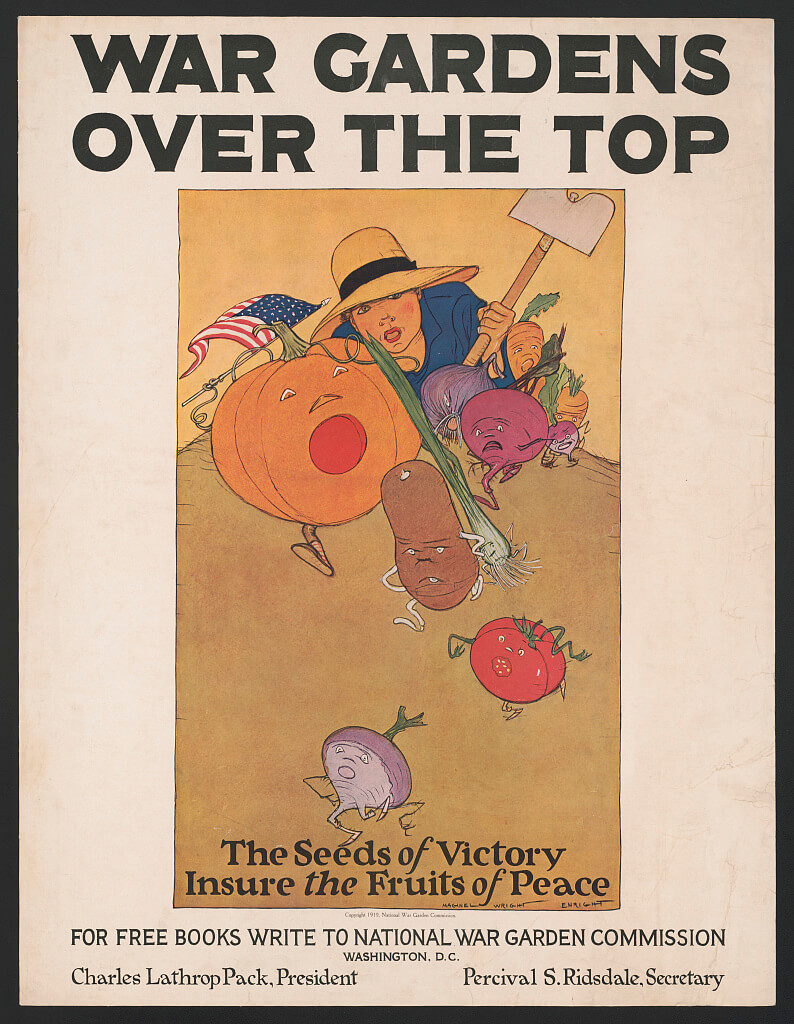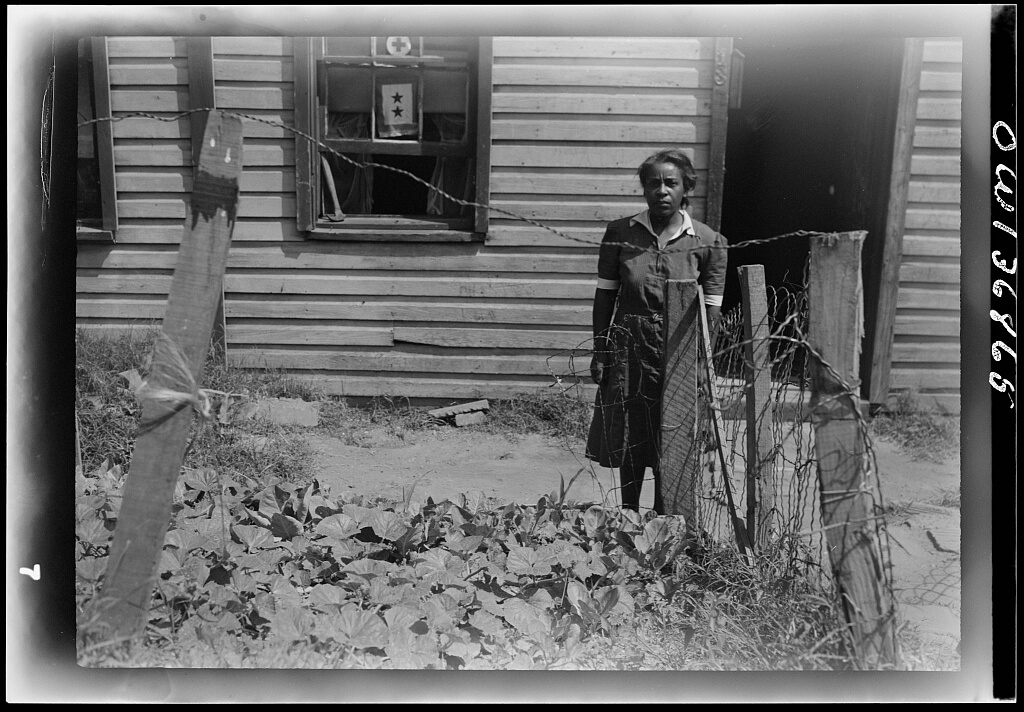Sowing seeds of resilience: gardening in times of crisis
Sowing seeds of resilience: gardening in times of crisis
“Will you have a part in victory?”
During WWI propaganda posters across the country asked Americans this question. They weren’t recruiting enlistees or requesting donations for munitions manufacturing - they were urging Americans to garden.
Europe faced a severe food shortage during the First World War, which affected civilians as well as troops. With limited food being exported from the U.S. to overseas, the U.S. government launched an extensive campaign to promote “victory gardens.” Everyone, from New Yorkers to Hoosiers, was encouraged to grow produce at home so more food might be exported to the battlefront. The effort was considered materially beneficial in the war effort as well as a means to boost morale and health in a time of crisis.

Provided by the Library of Congress, Barney, Maginel Wright, 1877-1966,
artist National War Garden Commission, funder/sponsor.
During the COVID-19 pandemic, many Americans have again turned to gardening to cope during a crisis.
“Last year every independent garden center I know of in the state of Indiana reported a record year,” Kyle Daniel, nursery and landscape outreach specialist with horticulture and landscape architecture (HLA), said. “Additionally, landscape companies reported it was one of their most successful years.”
National-level data supports what Daniel heard through the proverbial grapevine. The Axiom Marketing 2021 Insight Survey reported a 48 percent increase in gardening activity among Americans in 2020. Already established gardeners spent 42 percent more time on the pastime, and there was an over 50 percent hike in the number of 19-39 year old gardeners. According to the report, flowers were the most popular item to plant in 2020, but vegetables came a close second.
“There’s no doubt gardening is therapeutic,” Daniel said. “There are lots of studies that show having a garden is great for mental health and can even extend life spans. I’m not surprised people have turned to the activity during COVID.”
The drive to be productive outdoors during the past year extends beyond traditional gardens, HLA professor Cale Bigelow said.
“People were much more attentive to plants, including their lawns, over the past year,” Bigelow continued. “There was even a shortage of potting soil at one point because people were trying to grow their own veggies on balconies. I hope this continues.”
As the COVID-19 pandemic heads into its second year, Daniel said he suspects gardening will continue to be a draw for the American public. With that in mind, March is the time gardeners, seasoned and aspiring, should begin preparing for planting.
First, Daniel recommended, order seeds as soon as possible as the seed shortage, sparked by COVID-19, continues. Daniel recommends starting seeds indoors, near a sunny window or with a grow light, until the risk of frost has dissipated, around May 15. Anytime in March is also the best time to make additions to garden soil that will support plant health and life through the growing season.
“Right now is a good time to add your soil amendments, whether that’s compost, manure or weed killer,” Daniel advised. “The reason to put that in now is that you want microbes to begin breaking down the carbon into nitrogen, which is essential to maintaining healthy soil and plant life cycles.”

Although perhaps not as exciting as planning a garden, it’s also time for most people in the Midwest to begin their lawn care regimens.
“For those in central Indiana, it’s time to think about spring fertilizing and perhaps a weed deterrent for those with a history of crabgrass in their lawns,” Bigelow recommended. “Most garden centers carry products that are good for this.”
Bigelow also suggested downloading the Purdue Turf Doctor a mobile phone app, which helps identify seasonal weeds, diseases and insects.
Finally, Daniel said, it’s important that gardeners and landscapers make plans that excite them so working outside doesn’t become another chore. Too often, he added, people overextend themselves with spring planting only to become overwhelmed with plant care and weeding come summer.
“Be patient, don’t jump ahead on the calendar when it comes to planting, and have fun,” Daniel advised. “Those are the two most important things to remember about gardening.”





